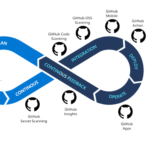Debugging is a critical skill for any programmer, whether you're working with Bash scripts or Python programs. Errors can be frustrating and time-consuming, but with the right approach and tools, you can quickly identify and fix issues, improving your code's reliability and maintainability. In this comprehensive guide, we'll explore common errors in Bash and Python, practical debugging techniques, best practices, and the latest tools to help you become an expert troubleshooter.
Understanding Debugging: Why It Matters
Debugging is the process of identifying, isolating, and fixing problems or bugs in your code. In scripting languages like Bash and Python, errors can stem from syntax mistakes, logical flaws, environment issues, or runtime exceptions. Efficient debugging not only saves time but also enhances your understanding of the language and the application's behavior.
Common Errors in Bash and How to Debug Them
Key Concepts and Typical Bash Errors
- Syntax errors: Missing quotes, unmatched parentheses, or incorrect command usage.
- Command not found: Typo in command or missing executable in PATH.
- Permission denied: Trying to execute a script without execute permissions.
- Variable expansion issues: Incorrect variable references or quoting problems.
- Exit status errors: Commands failing silently or not checked properly.
Practical Debugging Methods in Bash
- Use
set -xto trace commands: This prints each command and its arguments as they are executed, helping you see the exact flow. - Use
set -eto stop on errors: This causes the script to exit immediately if any command fails, preventing cascading errors. - Check exit status: Use
$?after commands to verify success or failure. - Use
shellcheck: A static analysis tool that detects common mistakes and suggests fixes. - Echo debugging: Insert
echostatements to print variable values and checkpoints.
Example: Debugging a Bash Script
#!/bin/bash
set -xe # Enable debugging and exit on errors
filename="myfile.txt"
if [ -f "$filename" ]; then
echo "File exists: $filename"
else
echo "File does not exist: $filename"
fi
In this example, set -xe helps you see each command executed and stops the script if any command fails. If the script doesn't behave as expected, the trace output pinpoints where it goes wrong.
Common Errors in Python and How to Debug Them
Key Concepts and Typical Python Errors
- Syntax errors: Missing colons, indentation errors, or invalid syntax.
- Exceptions: Runtime errors like
IndexError,KeyError,TypeError, etc. - Logical errors: Code runs but produces incorrect results.
- Import errors: Missing modules or wrong import paths.
- Resource errors: File not found, permission denied, or memory issues.
Practical Debugging Methods in Python
- Use
print()statements: The simplest way to check variable values and program flow. - Use the built-in
pdbdebugger: Allows interactive stepping through code, inspecting variables, and evaluating expressions. - Use IDE debugging tools: Most modern IDEs (PyCharm, VSCode) provide graphical debuggers with breakpoints and watches.
- Use
try-exceptblocks: To catch and handle exceptions gracefully and log errors. - Static analysis with
flake8orpylint: Detects style issues and potential bugs before runtime.
Example: Debugging Python Code with pdb
import pdb
def divide(a, b):
pdb.set_trace() # Start debugger here
return a / b
result = divide(10, 0)
print(result)
Running this code will drop you into an interactive debugger at the pdb.set_trace() line, letting you inspect variables and step through the code to understand why the division by zero error occurs.
Best Practices and Learnings for Debugging Bash and Python
- Write clear, modular code: Smaller functions and scripts are easier to debug.
- Use version control: Tools like Git help track changes and isolate when bugs were introduced.
- Log extensively: Use logging frameworks (Python's
loggingmodule, or Bash logging to files) instead of relying solely on print statements. - Automate tests: Unit tests catch bugs early; frameworks like
pytestfor Python andbats-corefor Bash are invaluable. - Understand your environment: Differences in shell versions, Python interpreters, or OS can cause bugs.
- Keep learning debugging tools: Master debuggers, linters, and profilers to improve efficiency.
Latest Tools and Technologies for Debugging
- Bash:
shellcheckfor static analysis,bashdbfor interactive debugging. - Python:
pdbpp(an enhanced pdb),ipdb(IPython-enabled debugger),PyCharmandVSCodedebuggers,pytestfor testing. - Logging: Python's
loggingmodule with configurable handlers; Bash scripts can redirect output to log files with timestamps. - Static analysis:
flake8,pylintfor Python;shellcheckfor Bash.
Challenges and Solutions Faced by Practitioners
- Challenge: Debugging intermittent or environment-specific bugs.
Solution: Use consistent environments (Docker containers, virtual environments), add detailed logging, reproduce bugs locally. - Challenge: Complex scripts with poor readability.
Solution: Refactor code, add comments, split into smaller functions or scripts. - Challenge: Lack of debugging tools in minimal environments.
Solution: Use simple echo/print debugging, remote debugging tools, or install lightweight debuggers.
Future Outlook and Emerging Trends in Debugging
Debugging continues to evolve with AI-powered tools that can automatically detect bugs and suggest fixes. For example, GitHub Copilot and other AI assistants help identify problematic code patterns. Containerization and cloud-native development also push for better environment reproducibility, reducing "works on my machine" bugs. Additionally, observability tools that combine logging, tracing, and metrics are becoming standard to understand complex systems beyond simple debugging.
Real-World Examples
- Example 1: A DevOps engineer used
shellcheckto identify subtle quoting errors in a Bash deployment script that caused intermittent failures during server provisioning. Fixing those errors improved deployment reliability significantly. - Example 2: A data scientist used Python's
pdbdebugger to step through a data processing pipeline and discovered a logical error in data filtering, which corrected incorrect analysis results. - Example 3: A software team integrated
pytestand continuous integration pipelines to catch Python bugs early, reducing production incidents by 40% over six months.
For more details on Bash debugging, visit ShellCheck Official Site. For Python debugging, see the official Python documentation on pdb.
Summary
Debugging Bash and Python code efficiently requires understanding common errors, using the right tools, and following best practices. By leveraging debugging flags, static analyzers, interactive debuggers, and automated tests, you can quickly find and fix issues, improving your code quality and productivity. Stay updated with emerging tools and methodologies to keep your debugging skills sharp in an ever-evolving programming landscape.
Further Reading and References
- ShellCheck - Bash static analysis tool
- Python pdb debugger official docs
- Real Python: Debugging with pdb
- GNU Bash Debugging Techniques
- pytest - Python testing framework
- flake8 - Python style guide enforcement
- Book: Python Testing with pytest by Brian Okken, Pragmatic Bookshelf
- Book: Classic Shell Scripting by Arnold Robbins and Nelson H.F. Beebe, O'Reilly Media
If you want expert help to automate or optimize your scripts or Python applications, or need tailored advice on debugging strategies, contact us today and let’s solve your toughest coding challenges together.



